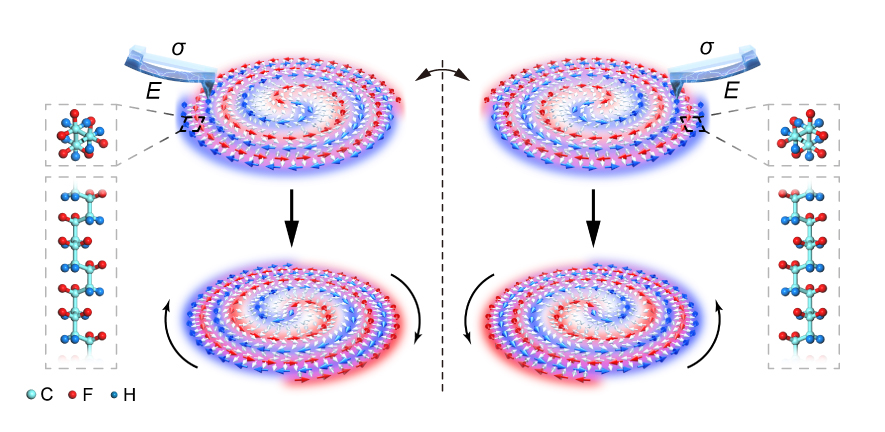There is now great interest in materials whose electrical dipoles form complex polar topologies reminiscent of complex magnetic topologies such as skyrmions. However, the electric field-driven manipulation of polar topologies has been hitherto limited to all or nothing creation and destruction processes. By locally applying relatively small electric and mechanical fields to thin films of a suitably chosen relaxor ferroelectric polymer, we have shown that polar spirals undergo quasi-continuous rotations proportional to field magnitude, reaching 130° with 120 MV m-1, and 780° with 324 MPa. The rotations are non-volatile, and show robust retention. Both the formation and rotation polar spirals is attributed to an asymmetric Coulomb interaction and a weak dielectric anisotropy between the helical polymer chains. Given that the rotated topologies can be read out using infrared light, the work holds promise for applications in neuromorphic systems and field-addressed spatial light modulators.
Figure caption: Helical chain conformations in polar polymers can yield exotic spiral topologies, all of which rotate when the tip of an atomic force microscope is used to apply electric or mechanical fields. The spirals can run clockwise (left) or anticlockwise (right) according to the handedness of the polymer chains, which run vertically through the film (we present expanded views from the top and one side).
M Guo, E Xu, H Huang, C Guo, H Chen, S Chen, S He, L Zhou, J Ma, Z Shen, B Xu, D Yi, P Gao, C-W Nan, N D Mathur and Y Shen, “Electrically and mechanically driven rotation of polar spirals in a relaxor ferroelectric polymer”, Nature Communications 15, 348 (2024)

